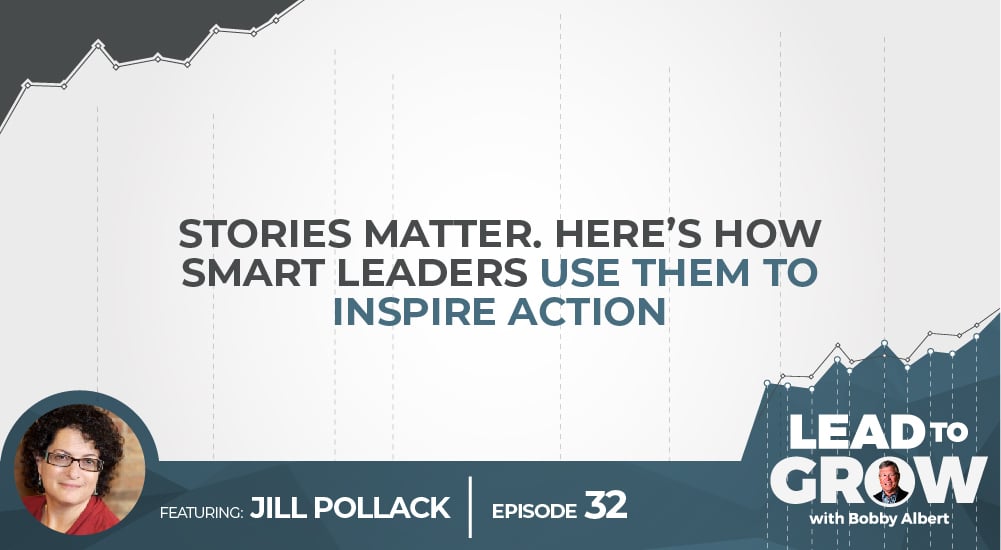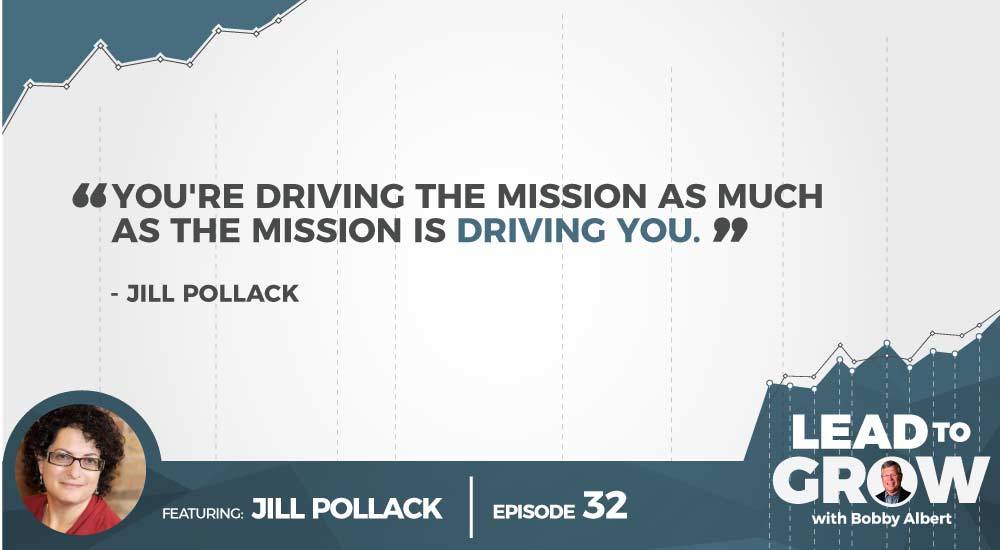The power of storytelling is undeniable. When you speak at a conference, or with your friend one-on-one, notice how much they remember of the conversation when it’s attached to a story. Likely, they (and you) will forget much of your conversation, except those pieces that revolved around a particular event, with specific people and places. Humans remember stories, and further, we share stories.
As leaders, we must learn how to wield these powerful tools to inspire action on our teams.
For this topic, I found someone who’s, quite literally, a professional storyteller. Her name’s Jill Pollack, Founder of StoryStudio Chicago and “Chief Story Wrangler” at Story Mode.
At Story Mode, she helps corporations tell better stories to compel audiences to action.
We interviewed her on our Lead to Grow podcast, where she dropped these gold mines of truth about storytelling:
Stories matter. Here’s why
Have you ever been to a company’s website and read this:
“We provide innovative solutions.”
Guess what? It doesn’t really mean anything to anyone.
Providing “innovative solutions” sparks no imagination, attaches to no emotion, and compels no action.
Storytellers have long understood the power of telling a real, specific, detailed story. Now, corporations are catching up. That’s why Jill started Story Mode — she was already teaching writers how to sharpen their talent when businesses started noticing her skills and began asking her to help them convey their messages with more compelling words and stories.
Here’s what she teaches businesses every day:
The power of storytelling lies in the details
Writers have known for a long time they must use details, not generalities. That’s why “innovative solutions,” has no real life to it. Even a simple change to: “We’re going to teach you how to be more creative so you can get more done,” does a lot for your messaging. It has a little more detail, it’s a little more interesting, and it’s a little more compelling.
But we can do even better.
Writers have long known the power of language — of images, metaphors, and similes. Inherently, storytellers understand that by connecting with an audience’s emotions, the message attaches to their memory.
In the last few years, science has been catching up. They’ve proven storytellers right on every count. Now, science can prove the difference between a generality and a detail, and how it connects in the brain. (This Harvard article talks a little more about the science behind storytelling.)
Storytelling is ‘art + science’
The art
Jill says the first act of storytelling is all gut. You have to simply get it out, on paper, on your video, whatever medium you are communicating. This requires bold moves. You can’t start throwing things out, yet. You just have to run with whatever ideas present themselves.
No one is better at this than children. They’re always imagining, which comes out in their answers and their questions.
Ask a flour-covered child why flour spilled all around the kitchen floor. You’re likely to get a great story about the family pet, who was never even in the room.
Children’s bold imagination also comes out with their questions. They’re always trying to drill down to the why. They take nothing surface-level for granted.
(I distinctly remember my grandson using both his hands to grab my daughter-in-law’s cheeks and exclaiming, “But why, mommy, why?!”)
The Science
The second part of storytelling is less imagination and more scientific, but it takes just as much grit, and perhaps even more expertise. Once you have all your ideas out, you now must edit them down your to those with the most quality that are the most fitting for your audience and your underlying message.
Editing takes a lot of courage. You must be willing to toss out 90% of your ideas to trim down to the best ones. You must also possess the skill to know which ones to throw out, and which ones to keep.
If Someone Had Lunch With You, What’s the Key Thing You’d Want Them to Walk Away With?
(This question is one of my favorites to ask every guest on the show!)
Here’s Jill’s answer:
“I am an idea machine. 90% of my ideas are ridiculous, but I have no fear in sharing them because I know once I get through the ridiculous ideas, I’m going to hit one that’s really a fit.”
You know what I took away from this statement? The first step of any storytelling is to be fearless!
If you want to learn more about how to tell your corporate story, check out:
This blog post is from a podcast interview with Jill Pollack, Founder of StoryStudio Chicago.
Click here to hear this full episode. If you don’t use iTunes, you can also find the full list of episodes by clicking this link.


